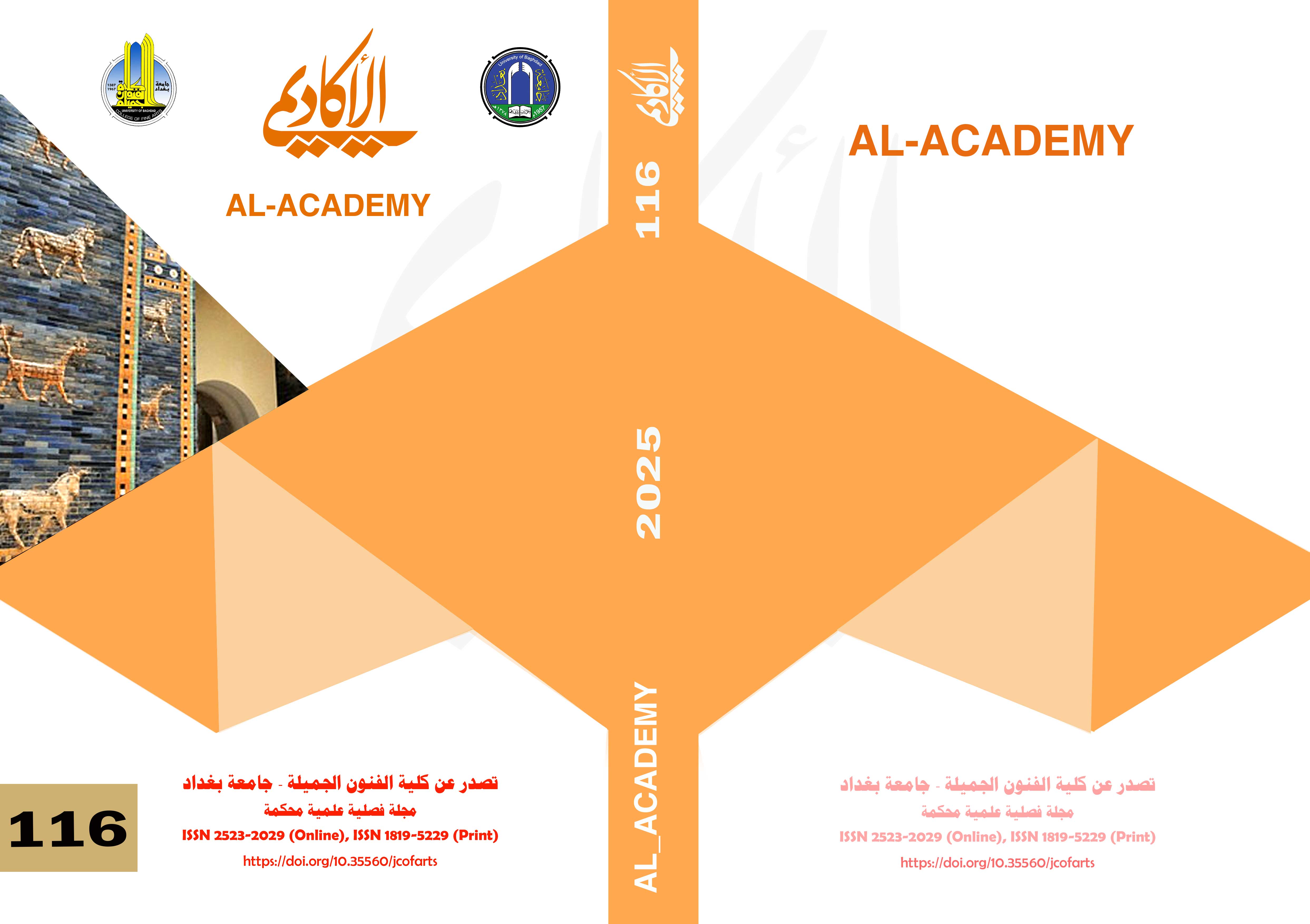The actor between stereotype and creativity in Iraqi television drama
DOI:
https://doi.org/10.35560/jcofarts1613Keywords:
Actor, Stereotyping, Creativity, DramaAbstract
The actor is one of the most important elements of dramatic work in visual discourse, whether in theater, cinema, or television. The challenges facing the actor in deserving the title of "actor" and establishing his or her distinctive mark require him or her to pursue their skills, intellect, and physical preparation, as well as their relationship with the script, the director, and the audience. This is particularly true in cinema and television, the subject of this study. Although some directors prioritize directing over the actor, placing him or her in second place, the actor remains an important element in the artistic work, and his or her skill and mental, vocal, and physical effort are what qualify him or her to be a professional actor. While many experts in the field and theory have addressed the study of the art of acting and the methodological approaches to guiding actors to achieve mastery and influence at the same time, there is no material to be read or taught that would enable those who desire to be both actors and creatives at the same time. There is no magic antidote to enable actors to achieve a state of "creativity," to be creative, and to pull them out of the "stereotypical" performance. Even academic study prepares and provides opportunities to enter this profession, and the actor is tasked with thinking about constructing and formulating their expressive means, which require continuous mental, physical, and vocal effort. Academic study teaches you how to use a weapon, but it does not teach you how to hit the target. The researcher believes that the classification of a professional actor can be divided into two categories:
The first: the creative, who draws themselves into the realm of the character and the text.
The second: the imitator, who draws the text into their personal realm.
References
Abdel Hamid, S. (2021, 11 2). Diversity and Non-Diversity in Acting. Retrieved from https://www.ahewar.org/debat/show.art.asp?aid=736492.
Al-Hamdani, A.-M. (2016). Dramatic Performance Methods Throughout the Ages. Amman: Methodology House for Publishing and Distribution.
Allardyce, N. (1992). The World Play. (D. Khashaba, Trans.) Kuwait: Dar Suad Al-Sabah.
Al-Moussawi, S. (1989). The Actor Between Stereotype and Creativity. Baghdad: Al-Qadisiyah Newspaper, Culture/Seventh Art.
Al-Qaisi, F. (2001). The Problem of Acting Performance in Iraqi Television Drama. Baghdad: University of Baghdad, College of Fine Arts, Master’s Thesis.
Al-Rafai, A.-S. (2021). Theatrical Performance of the Stereotypical Character in Contemporary Arab Theatre. Egypt: Alexandria University, Faculty of Arts.
Al-Sarmadi, S. (2014, 9 12). The Influence of Sanford Meisner on Contemporary Acting. Retrieved from https://www.ahewar.org/debat/show.art.asp?aid=445115.
Anous, N. (2019). Ibrahim Ramzy’s Theatre (An Analytical Study and Investigation of His Theatrical Texts). Cairo: The Egyptian General Book Authority.
Dior, E. (2004). The Art of Acting, Horizons and Depths. Cairo: Center for Languages and Translation.
Haas, K. (2010). The Art of Cinematic Acting. (A. Youssef, Trans.) Cairo: National Center for Translation.
Ibn Manzur, M.-F. (2003). Lisan al-Arab. Cairo: printed, published and distributed by Dar al-Hadith.
Karini, A. (B.T). The Art of Acting. (T. Fawzi, Trans.) Cairo: Egyptian House for Printing and Publishing.
Kazem, R. (2016, 9 12). the creative actor and innovative artist. Retrieved from https://theaterars.blogspot.com/2016/09/blog-post_12.html.
Khalil, F. (2021, 8 10). https://www.ahewar.org/debat/show.art.asp?aid=727763. Retrieved from Directing Methodology.
Masoud , G. (1992). Al-Raed: A Modern Linguistic Dictionary. Beirut: Dar Al-Ilm Lil-Malayin.
Massoud, M. (2017, 2 23). The phenomenon of the actor who repeats the same roles... boring stereotype or artistic affirmation? Retrieved from https://www.alquds.co.uk.
Nelms, H. (1961). Theatrical Direction. (A. Salama, Trans.) Cairo: Anglo-Egyptian Library.
Rice, A. (1965). The Living Theatre. (D. al-Sayyid, Trans.) Cairo: Dar Nahdet Misr Printing House.
Sakran, R. (2001). Theatre of the Theatre. Baghdad: General Directorate of Cultural Affairs.
Stanislavski, C. (1987). The Preparation of the Actor. (M. Al-Ashmawy, Trans.) Egypt: Dar Al-Nahda Al-Arabiya.
Subhi, T. (1992). Introduction to Talent and Creativity. Amman: Dar Al Tanweer Al Ilmiyah.
Talaba, J. (B.T). Dictionaries of Meanings in Arabic. Egypt: Dar Al-Jawhara for Publishing and Distribution.
The Arabic Language Academy. (2004). Al-Mu'jam Al-Wasit. Egypt: Al-Shorouk International Library.
Whiting, F. (1970). Introduction to the Dramatic Arts. (K. Youssef, Trans.) Cairo: Al-Ahram Egyptian Press.
Yassin, M. (1981). The Film Team. Baghdad: Ministry of Culture and Information.
Zakhova, B. (1996). The Art of Actor and Director. (A. Al-Rawi, Trans.) Jordan: Ministry of Culture.
Zaki, A. (1989). The Genius of Theatrical Directing, Schools and Curricula. Cairo: Egyptian General Book Authority.














